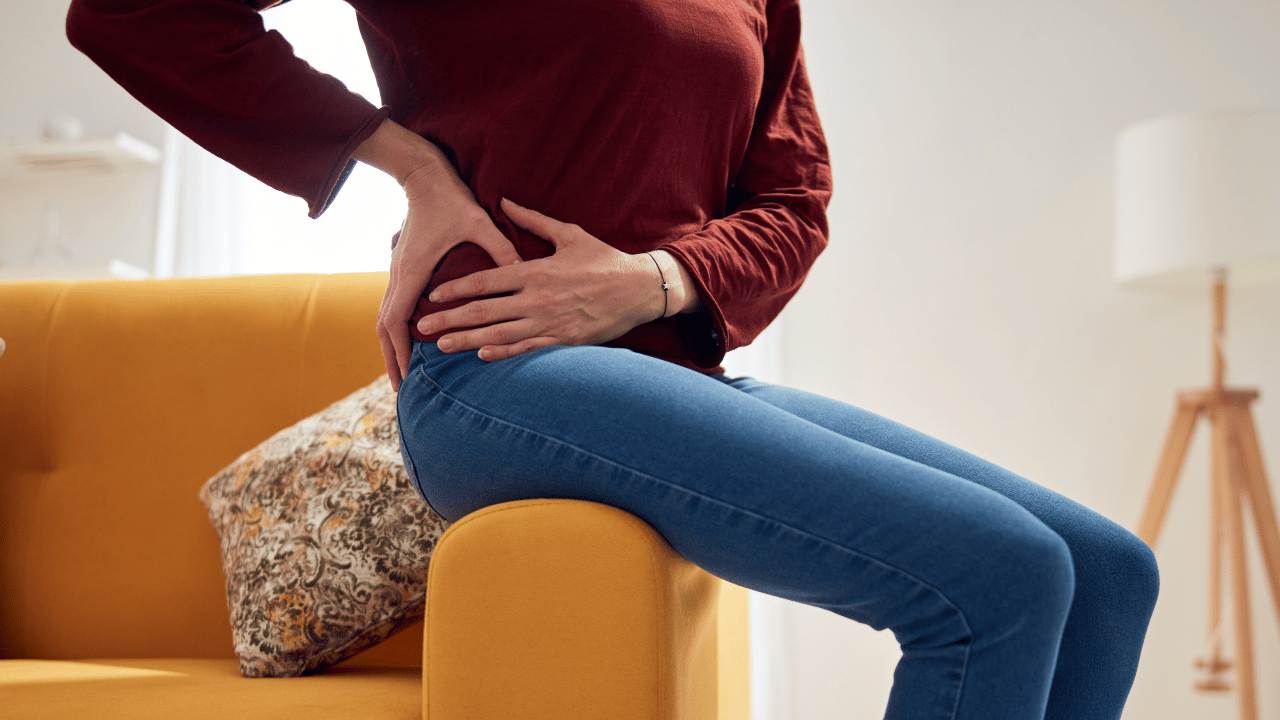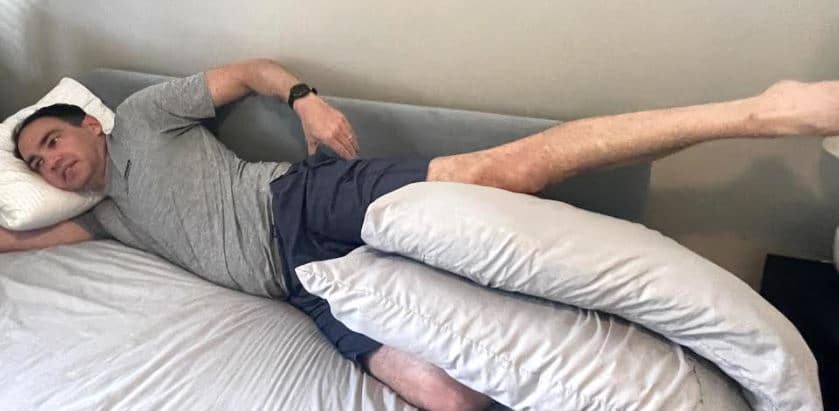
Lateral Hip Pain Cause and Treatment
Have you noticed that your hips have started to bother you? Your pain might commence as a mild ache in the bony region outside your hip when descending steps or, in some cases, even when climbing stairs. As a few weeks pass, you might notice this muscle ache begins to occur more frequently, ultimately disrupting your sleep by preventing you from lying on your side in bed. Consequently, stress due to disrupted sleep and chronic pain can lead to headaches and neck pain, reducing the overall quality of your daily life. Pain may reach a stage where you seek a consultation or advice regarding your condition, possibly concluding it to be hip bursitis. If this scenario feels familiar, then it’s essential that you continue reading because the likely culprit of your symptoms could be a weakness in the gluteus medius tendon, commonly referred to as gluteal tendinopathy.
Gluteal tendinopathy, previously referred to as trochanteric bursitis (inflammation of the fluid-filled sac around your hip joint), is believed by many doctors to be triggered by a compression injury of the light-sensitive gluteus medius tendon. This compression is theorized to occur from the pressure of the Iliotibial band as the thigh is adducted or brought across the midline, as illustrated in the standing posture of the female patient shown below. Notice how her right leg moves towards the midline, shifting her pelvis and applying pressure to her right hip.

What is causing my lateral hip pain?
Tendons have been anatomically designed to handle tension – they quite literally thrive under these types of forces all day. However, compression is a different story. While tendons can withstand some compression, they become harmful when exerted for too long or in conjunction with tensile forces.
The immediate body response to such a situation is for the tendons to create swelling around the affected area, creating a protective “force shield” around the irritated tendon region. The problem is the “protective swelling” causing an increase in tendon size, which leads to more compression and usually results in pain if the overload or reduction continues for long-term degenerative changes to occur.
Compelling patients to seek treatment, the prevalent symptoms include pain on the outside of the hip, stiffness that increases 24 hours after activity, and tenderness. In females specifically, the ache may manifest as a constant throbbing or referred pain that travels down the outside of the thigh, making everyday acts like walking upstairs or even putting on shoes excruciatingly difficult. These symptoms, combined with the aforementioned ones like headaches and neck pain, lead to a significant deterioration in the quality of life endured by affected individuals.
While the suggested treatments for this condition often vary depending on the patient, some universal advice includes eliminating running on uneven roads, avoiding crossing your legs when sitting, and adjusting your posture, especially when standing or lying down, to relieve pressure on the hip. Indeed, problems with hips and other joints can often be traced back to such habits. Injuries to the hip bone or other joints, even ones as seemingly benign as a minor strain in the groin area, may necessitate a consultation with a chiropractor or other specialists such as an Austin, TX physical therapist. Undergoing a comprehensive evaluation, regardless of age, is part of understanding better the available treatment options.
Steps to Treating Your Lateral Hip Pain
- Step 1: Eliminate aggravating activities
- Avoid crossing your legs
- Use pillows between legs to keep the affected from dropping below parallel
- Avoid “hanging on your hip” postures
- Step 2: Activate the Glute Medius in Side-lying with Pillow Support.
Set up and technique is critical with this exercise to reap the full benefit.
- Assume a side-lying position with the sore hip towards the ceiling.
- Bend the bottom knee to ~60 degree angle
- Align yourself, so your top shoulder, knee, and hip are all in alignment
- Place 1-2 pillows between your knees, so your top leg is parallel to the bed or ground. (You should perform this exercise 5x/week).
Feel the burn here:

Lift up and slightly backward

Holding: 5-10sec, rest 5 sec
Repeat x10
You should perform this exercise 5x/week.
The key to determining if this exercise is appropriate for you is using the “24-hour rule.” If you experience increased pain (pain 4/10 or higher) with increased stiffness 24hrs after doing this movement, then that exercise bout was too much load for the tendon at this time. Don’t give up, though. Instead, try dialing it back by reducing repetitions or the hold time and reassess how the hip responds the next day.
Lateral hip pain is no fun. It can significantly disrupt one’s active lifestyle. Although the information provided above is helpful, your best bet to eliminate your lateral hip is being evaluated by a physical therapist. At Move Empower Concierge PT, our manual therapists specialize in hands-on treatment to expedite your care, all done in the comforts of your home or office!
Curious if Move Empower Concierge Physical Therapy is a good fit for you?
Then start with a complimentary consultation with one of our specialized physical therapists to learn more about your problem and determine if we are the best solution for you. You can also check out the video below from our YouTube channel that goes into more detail on how to do hip pain relief exercises.
